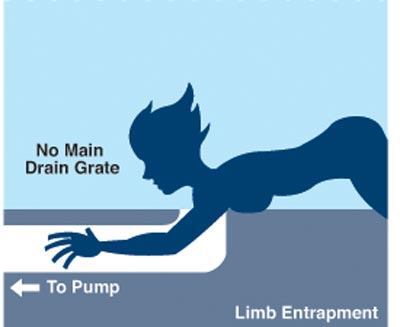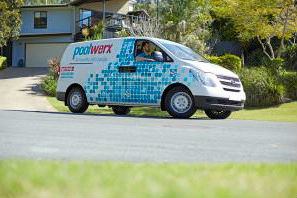The Pool Safety Council has released two studies examining the dynamics of limb and evisceration entrapments, and the role safety vacuum release technology might play in preventing or mitigating them.
The Washington, D.C.-based organization was founded, and is led by, Paul Pennington, former president of Vac-Alert Industries, a leading manufacturer of SVRS systems.
“I think the study supports our position that we’ve had all along that the SVRS prevents against limb entrapment,” Pennington said. “I think it shows that it’s a good idea to have an SVRS to prevent evisceration because it might stop the worst-case scenario.”
Currently, many contend that SVRS technology prevents body entrapments, but not the other four types — limb, evisceration, hair and mechanical.
PSC sought to re-explore this belief in the case of limb entrapment and evisceration. The organization collaborated on two studies with the NASA-funded Space Alliance Technology Outreach Program and the Florida Institute of Technology.
The studies were performed over the summer by Florida Tech professor Steven M. Jachec, Ph.D., P.E. He applied engineering equations and information taken from previously published articles, journals and studies. Some physical testing was performed by PSC personnel.
The first study examined limb entrapment and the role of suction in causing it. With the application of equations, Jachec examined the first part of a suction limb entrapment — when the limb is initially drawn into the outlet. As this happens, the study showed, the limb is pulled inward by forces stronger than most people can resist.
“The study shows that the pull can be quite large and beyond what a little one could overcome,” said George Pellington, PSC’s technical director and current Vac-Alert president. “The flow and suction are like a tractor beam pulling the arm in.”
This leads PSC officials to believe some type of vacuum release system would help during this initial part of the entrapment.
Future studies would have to explore what happens once the limb causes a seal in the pipe, Pellington added.
Also requiring more study is a PSC theory regarding how suction-related entrapments occur.
One belief held by many, including the Association of Pool & Spa Professionals, states that when a limb becomes trapped in a pipe, it often swells, causing the body part to become stuck and create a mechanical bond with the pipe. In these cases, releasing the suction will not help because the limb is wedged in too tightly, according to APSP officials.
But PSC theorizes that such swelling may occur because the vacuum causes pressure inside the limb to be higher than that inside the pipe. Once the vacuum is broken and pressure equalizes, PSC believes, the limb would immediately become free.
“[I believe] that APSP’s assumption is too simplistic,” Pellington said. “What’s happening is a sudden blood rush to the area … which causes a swelling like a mechanical inflation. Then, once the vacuum is off, the arm comes out really quickly.”
PSC officials said case studies suggest that most limb entrapments are suction-related, as opposed to mechanical, and could be mitigated by SVRS technology. “All known U.S. limb entrapment cases [but one] have reported release of the bather once the suction force was released,” Pellington stated.
For the next study, addressing evisceration, the Pool Safety Council and Jachec sought to establish how long it takes for an evisceration to occur. Jachec referred to previously recorded data and literature, concluding that the fastest an evisceration could take place is 1.86 seconds. However, the tissue could begin tearing and evisceration begin as quickly as 0.44 seconds.
Jachec performed a related analysis to determine how quickly an SVRS can react. Using data supplied by PSC, he computed a time of 1.23 seconds. The evisceration and SVRS reaction times both applied to a scenario involving a 3-horsepower pump, 50 feet of 2-inch schedule 40 PVC plumbing, and 70 gallons per minute of flow.
Some of the data was drawn from testing that took place at PSC’s 5,000-square-foot testing facility near Tampa, Fla.
“This brings up the question of which would you rather have — a pool that has no protection or one that has an SVRS — when you’ve got your children or grandchildren … playing in the pool? I think it’s a no-brainer,” Pennington said.
However, SVRS reaction time is affected by variables such as length of pipe and the technology involved. Reaction times as high as 4.5 seconds are accepted for compliance with ASME A112.19.17-2002 — far longer, in relative terms, than the study’s 1.86-second time frame for an evisceration to occur.
Others involved in writing entrapment-prevention standards get nervous at the idea of claiming a technology can protect against evisceration when it only helps in an unknown percentage of cases.
This concern comes from the fact that eviscerations happen so quickly and do so much damage. Even partial evisceration leads to devastating injuries and, sometimes, death. Because of this, some believe only devices that prevent it from starting altogether should be considered protective measures.
“The fact that some percentage of them could be helped, some percentage could be mitigated and others there’s nothing that can be done [isn’t enough],” said Steve Barnes, head of APSP’s Technical Committee and product manager, safety and compliance, at Pentair Water Pool and Spa. “We draw the line at the side of safety that says, ‘We’re not going to pick and choose. We’re going to prevent.’”
But there is one thing that both sides agree on — more research is needed.



